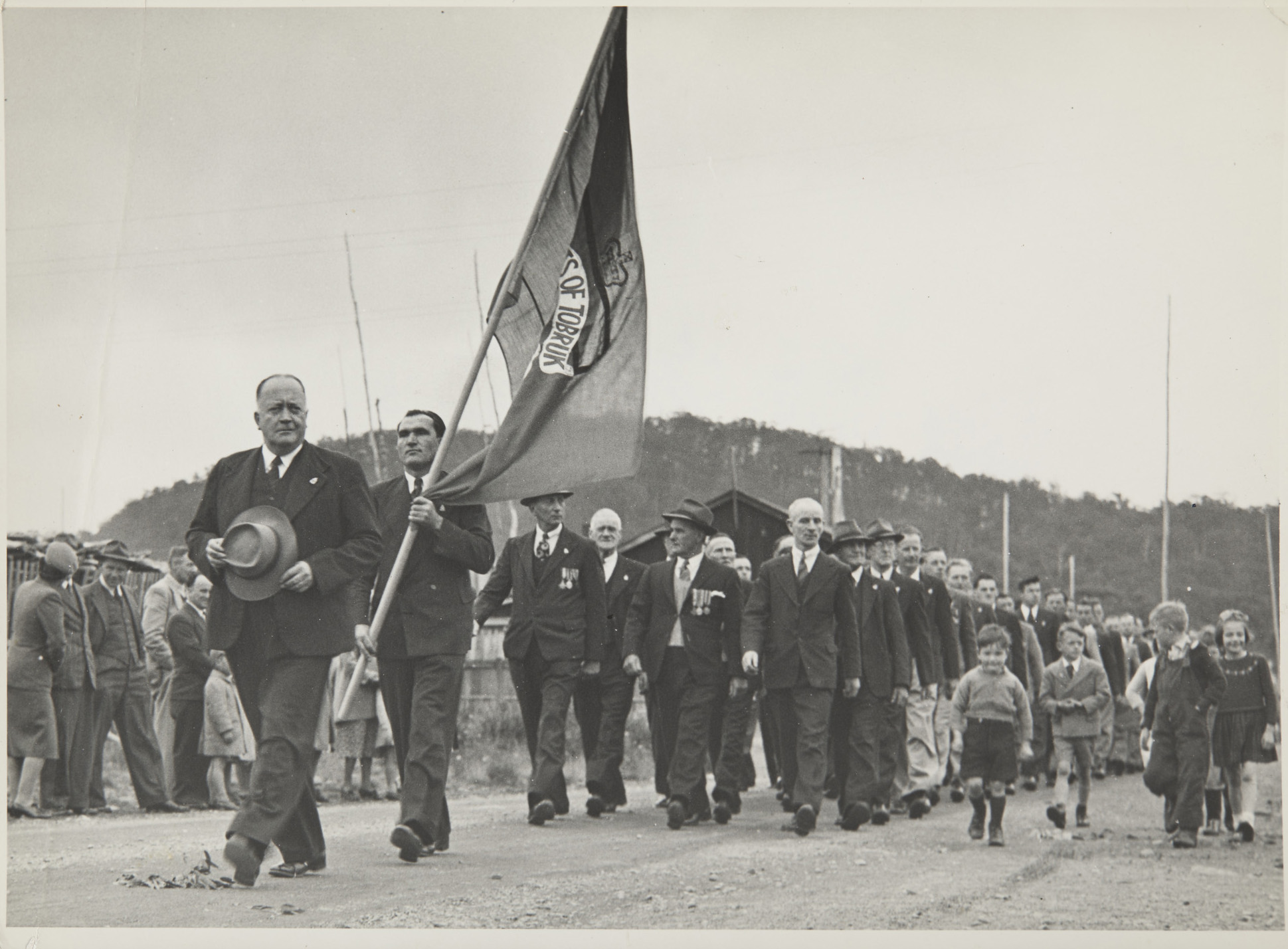‘A day that will live in our hearts’
1916: First Anzac Day commemorations
‘A day that will live in our hearts’
1916: First Anzac Day commemorations
In a snapshot
On 25 April 1915 Australian troops landed at Gallipoli in Turkey. This was part of an attempt by Britain, Australia and other nations to defeat the Ottoman Empire during the First World War (1914–18). On the first anniversary of the landing, Anzac Day was commemorated around Australia and wherever Australian soldiers were posted. By 1927 it had become a public holiday event across Australia. Anzac Day has been commemorated ever since, and is still an important day for many Australians.

 Can you find out?
Can you find out?
1. Why was Anzac Day first commemorated?
2. How did different states commemorate Anzac Day?
3. How had attitudes to Anzac Day changed by the 1960s?

What led to the commemoration of Anzac Day?
On 25 April 1915 16,000 ANZAC soldiers landed at what is now called Anzac Cove on the Gallipoli peninsula in Turkey. Around 2000 of them were killed or wounded that day, and over 10,000 died in the Gallipoli campaign, which ended in complete failure.
Newspapers published extremely positive accounts of the landing and the ANZAC’s bravery. Many in Australia believed that the Gallipoli landing was very important and that it should be commemorated. The day of the landings — 25 April — was declared ‘Anzac Day’ by the federal government in 1916.
‘Australia’s great heart is throbbing today as it has never throbbed before. For April 25 — “Anzac Day” — is a day that will live in our hearts and in our history as long as Australia lasts.’
Sydney Morning Herald, 25 April 1916

How was Anzac Day commemorated around Australia?
Anzac Day was commemorated in different ways around Australia. All states held a commemorative service, after which Gallipoli veterans and new enlistees (volunteers for the war) would march down the streets of their town or city.
Most states then held festivities of some kind in the evening. In Victoria Anzac Day focused on raising money for soldiers through big celebrations.
In New South Wales the Lord Mayor of Sydney spent £1000 on lighting public buildings but was criticised by families of soldiers who had died. However, many returned soldiers wanted the day to be as happy as possible, as they felt that this was what the Anzacs who died would have wanted.
Research task
Read this article on Anzac Day from the Australian War Memorial. What was happening in Australia that may have made Anzac Day less popular from the 1960s to 1980s? Explain your answer.

In London 2000 Anzacs marched through the streets and were cheered by the locals, before attending a commemorative service. Anzacs in Egypt attended a morning commemoration and then played cricket, swam in ‘a great Aquatic (swimming) Carnival’, attended a concert and watched a play about the ANZAC landing.
In 1927 Anzac Day became a public holiday in every Australian state for the first time. By the mid-1930s many of the rituals that are now practiced on Anzac Day were created. These included dawn vigils, marches, two minutes’ silence, memorial services, wreath-laying ceremonies and reunions. The most sombre (serious and sad) ceremonies took place in Queensland, under the leadership of military Chaplin David Garland. Garland’s sombre forms of commemoration would become the most common by the 1930s.
How has Anzac Day changed over time?
Anzac Day became less popular from the 1960s to the 1980s as fewer people thought war should be commemorated. This changed in the 1980s as commemorative ceremonies at Gallipoli became more common. Bob Hawke became the first prime minister to spend Anzac Day at Gallipoli in 1990.
Research task
What do you think Anzac Day means to Australians today? What does it mean to you?

In 2007 Aboriginal and Torres Strait Islander communities began organising Anzac Day marches to commemorate the lives of Aboriginal and Torres Strait Islander soldiers.
Anzac Day has now regained much of its original status, and is often seen as Australia’s unofficial national day. But many people feel that Anzac Day focuses on an unnecessary battle in which thousands were killed defending British interests, rather than Australian. Others who have lost family members in war see it as an important way to honour and remember them.
Read a longer version of this Defining Moment on the National Museum of Australia’s website.
 What did you learn?
What did you learn?
1. Why was Anzac Day first commemorated?
2. How did different states commemorate Anzac Day?
3. How had attitudes to Anzac Day changed by the 1960s?





















